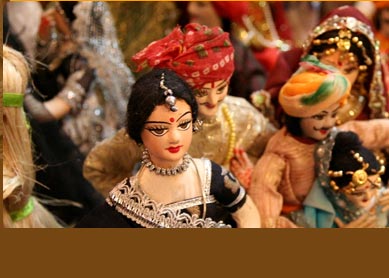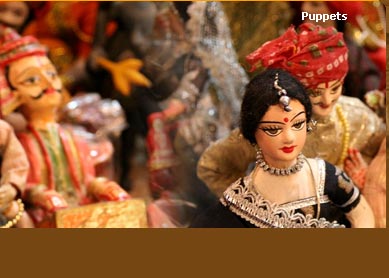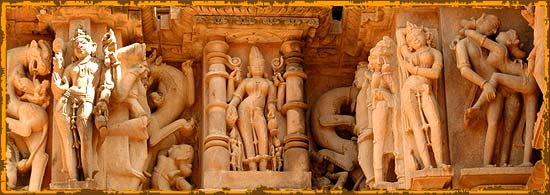

Ancient India

The beginning of urban civilization in Indian sub
continent started from Indus Valley, which flourished from about 2500 BC to
1500 BC at the center such as Harappa and Mohenjo-daro (now in Pakistan).
The civilization flourished on the banks of Indus river and extended to
northern Afghanistan.
It was renowned as one of the modern civilization of that era where particularly road-side drainage system and multi-storied houses were pioneered in contemporary architecture. The city buildings were made up of brick, and they were all multi-storied. Major urban centers were of Harappa and Mohenjo-daro as well as Dholavira, Ganweriwala, Lothal, Kalibanga and Rakhigarhi. Indus valley was known for sophistication and technology rich planning where a strong municipal governance that placed a high priority on hygiene. The streets were on grid pattern and house were made in such a way that they were devoid of any noise, odors and thieves. The civilization had the first urban sanitation systems and were far advanced than many contemporary places in the Middle East, Pakistan or even in some part of India. every individual house had wells and separate place for bathing and waste water. Waste water were directed to covered drains that lined the major streets. Harappa city was famous for brick platform, impressive dockyard and granaries.
There were huge citadels lined up to protect Indus city from flood and attackers. The people of the Indus Valley Civilization were among the first to develop a system of uniform weights and measures. It was believed that people had a great scientific temperament and engineering skill was noteworthy. As the civilization flourished near the rivers,the land was highly fertile although it was believed that most city people were traders or artisans. After excavation some beautiful artifacts like seals having images of animals, gods and other type of inscription were found. Other things found during excavations were pottery, sculptures, anatomically detailed figurines in terra-cotta and bronze and gold jeweleries.
Vedic age was remembered for the rise of Indo-Aryan culture associated with sacred vedas. It lasted about 1500 BC to 500 BC. Divided into two era - bronze age and iron age, the Vedic society consisted largely nomadic pastoral groups that migrated from Iran, Kurdistan, and Anatolia spreading their culture and language. The age started after Harrapan civilization mysteriously vanished for some unknown reasons. Principal texts of Hinduism, the three vedas and epics (Ramayana and Mahabharata) originated during this era.
The social system followed in Vedic age was more complicated than Indus Valley Civilization where people were divided into different status. The status of Brahmins and Khatriyas were higher than Dasyus and Vaisyas. Later vedic age was marked by agro-economic culture. Land was the major issue amongst kingdoms. Protection and acquisition of it was the most important part.
Mahajanpadas or rose of several small kingdoms were significant development during later vedic age period. Smaller kingdoms like Kasi, Kosala, Anga, Magadha, Vajji (or Vriji), Malla, Chedi, Vatsa (or Vamsa), Kuru, Panchala, Machcha (or Matsya), Surasena, Assaka, Avanti, Gandhara, Kamboja extended to Indo-Gangetic plains to Afghansitan. After Indus Valley Civilization, Mahajanpadas was the second most important milestone in Indian urban setting. Rituals and social structure became more complicated and the medium of language was Sanskrit. This age is also known as “golden age of thoughts”. This was the period when Buddhism and Jainism were found and preached across the country. Though Jainism had a limited circle but Buddhism diffused across the Central Asia, East Asia, Tibet, Sri Lanka, and South East Asia.
Rise of Mauryan empire made a strong impression in the Indian history and started a new era. India exalted to new heights in this era because of fresh ideas of politics, art, trade and commerce. All the fragmented kingdoms fused to form a new state moreover, India made a strong contact with outside world because of trade and commerce. The source of knowledge was based on six aspects.
Mauryan empire extended up to whole of East of India and also stretched along the natural boundaries of Himalayas in the north and had its capital city Patliputra now known as Patna. The empire was founded in 322 BC by a young gun known as Chandragupta Maurya with the help of his mentor Kautiliya (Vishnugupta), overthrown Greeks then the powerful Nanda kingdom. He extended his kingdom rapidly and soon fully occupied northwestern India. Mauryan empire was the largest empire to rule the whole of Indian subcontinent, it enshrouded whole of east, to the west it reached beyond Afghanistan and down to south it explore by Bindusara, successor of Chandragupta Maurya.
During the reign of Chandragupta Maurya, Kingdom elevated to heights in terms of social harmony, religious transformation, administration, reform and expansion of science. Arthashastra, a written record of economic, politics, administration, military art and religion was one of the greatest treatise written by Chadragupta’s minister Kautiliya Chanakya. Chandragupta Maurya later on embraced Jainism to spread social and religious reforms while his grandson Asoka, one of the greatest Monarch of India embraced Buddhism after bloody Kalinga war. Asoka enforced the principal of ahimsa (non-violence by banning the hunting and forced labor. Asoka maintained a friendly relationship with Asian and European countries and preaching Buddhism ans sponsor missions. The edicts of Asoka are primary source of Mauryan history.
The National Emblem of India is a replica of the Lion of Sarnath, near Varanasi. The emperor Asoka was so mesmerized by Buddhism that he made some spectacular landmark to spread the religion to every corners of India. Such as Barabar hills , where Asoka built caves for the Ajivakas, Lauriya Nandnagar where he raised a great pillar. Soon the other Buddhist sites like Sanchi, Bodhgaya, Kushinagar, Lumbini, Dhauli Hill, Udaigiri, Ratnagiri became popular Buddhist pilgrimages.
Kingdom After The Mauryan Kingdom
During the reign of Chandragupta Maurya, Kingdom elevated to heights in terms of social harmony, religious transformation, administration, reform and expansion of science. Arthashastra, a written record of economic, politics, administration, military art and religion was one of the greatest treatise written by Chadragupta’s minister Kautiliya Chanakya. Chandragupta Maurya later on embraced Jainism to spread social and religious reforms while his grandson Asoka, one of the greatest Monarch of India embraced Buddhism after bloody Kalinga war. Asoka enforced the principal of ahimsa (non-violence by banning the hunting and forced labor. Asoka maintained a friendly relationship with Asian and European countries and preaching Buddhism ans sponsor missions. The edicts of Asoka are primary source of Mauryan history. The National Emblem of India is a replica of the Lion of Sarnath, near Varanasi.
Other World Heritage Sites
It was renowned as one of the modern civilization of that era where particularly road-side drainage system and multi-storied houses were pioneered in contemporary architecture. The city buildings were made up of brick, and they were all multi-storied. Major urban centers were of Harappa and Mohenjo-daro as well as Dholavira, Ganweriwala, Lothal, Kalibanga and Rakhigarhi. Indus valley was known for sophistication and technology rich planning where a strong municipal governance that placed a high priority on hygiene. The streets were on grid pattern and house were made in such a way that they were devoid of any noise, odors and thieves. The civilization had the first urban sanitation systems and were far advanced than many contemporary places in the Middle East, Pakistan or even in some part of India. every individual house had wells and separate place for bathing and waste water. Waste water were directed to covered drains that lined the major streets. Harappa city was famous for brick platform, impressive dockyard and granaries.
There were huge citadels lined up to protect Indus city from flood and attackers. The people of the Indus Valley Civilization were among the first to develop a system of uniform weights and measures. It was believed that people had a great scientific temperament and engineering skill was noteworthy. As the civilization flourished near the rivers,the land was highly fertile although it was believed that most city people were traders or artisans. After excavation some beautiful artifacts like seals having images of animals, gods and other type of inscription were found. Other things found during excavations were pottery, sculptures, anatomically detailed figurines in terra-cotta and bronze and gold jeweleries.
Vedic age was remembered for the rise of Indo-Aryan culture associated with sacred vedas. It lasted about 1500 BC to 500 BC. Divided into two era - bronze age and iron age, the Vedic society consisted largely nomadic pastoral groups that migrated from Iran, Kurdistan, and Anatolia spreading their culture and language. The age started after Harrapan civilization mysteriously vanished for some unknown reasons. Principal texts of Hinduism, the three vedas and epics (Ramayana and Mahabharata) originated during this era.
The social system followed in Vedic age was more complicated than Indus Valley Civilization where people were divided into different status. The status of Brahmins and Khatriyas were higher than Dasyus and Vaisyas. Later vedic age was marked by agro-economic culture. Land was the major issue amongst kingdoms. Protection and acquisition of it was the most important part.
Mahajanpadas or rose of several small kingdoms were significant development during later vedic age period. Smaller kingdoms like Kasi, Kosala, Anga, Magadha, Vajji (or Vriji), Malla, Chedi, Vatsa (or Vamsa), Kuru, Panchala, Machcha (or Matsya), Surasena, Assaka, Avanti, Gandhara, Kamboja extended to Indo-Gangetic plains to Afghansitan. After Indus Valley Civilization, Mahajanpadas was the second most important milestone in Indian urban setting. Rituals and social structure became more complicated and the medium of language was Sanskrit. This age is also known as “golden age of thoughts”. This was the period when Buddhism and Jainism were found and preached across the country. Though Jainism had a limited circle but Buddhism diffused across the Central Asia, East Asia, Tibet, Sri Lanka, and South East Asia.
Rise of Mauryan empire made a strong impression in the Indian history and started a new era. India exalted to new heights in this era because of fresh ideas of politics, art, trade and commerce. All the fragmented kingdoms fused to form a new state moreover, India made a strong contact with outside world because of trade and commerce. The source of knowledge was based on six aspects.
- First, Arthashastra of Kautiliya that shows the picture of administration, society and economy. Second, Mudraraksha was a Sanskrit play by Visakadatta. It is said to be political literature unleashed the struggle of Chandragupta (the first Mauryan emperor).
- Second, Mudraraksha was a Sanskrit play by Visakadatta. It is said to be political literature unleashed the struggle of Chandragupta (the first Mauryan emperor).
- Third, The Jatakas of Buddhist revealed an idea of that period.
- Fourth, the accounts of Megasthenes minutely detailing the life of people, the administration, and institution under Chandragupta Maurya.
- Fifth, the Ceylonese Chronicle, the Dipavamsa and Mahavamsa throw light on the conversation of Ceylon also helped in show a perfect picture of Ashoka’s history.
- Sixth, the account from Greeks who overthrown by Chandragupta Maurya, told the intelligent of first Mauryan, also revealed the administration and social structure.
Mauryan empire extended up to whole of East of India and also stretched along the natural boundaries of Himalayas in the north and had its capital city Patliputra now known as Patna. The empire was founded in 322 BC by a young gun known as Chandragupta Maurya with the help of his mentor Kautiliya (Vishnugupta), overthrown Greeks then the powerful Nanda kingdom. He extended his kingdom rapidly and soon fully occupied northwestern India. Mauryan empire was the largest empire to rule the whole of Indian subcontinent, it enshrouded whole of east, to the west it reached beyond Afghanistan and down to south it explore by Bindusara, successor of Chandragupta Maurya.
During the reign of Chandragupta Maurya, Kingdom elevated to heights in terms of social harmony, religious transformation, administration, reform and expansion of science. Arthashastra, a written record of economic, politics, administration, military art and religion was one of the greatest treatise written by Chadragupta’s minister Kautiliya Chanakya. Chandragupta Maurya later on embraced Jainism to spread social and religious reforms while his grandson Asoka, one of the greatest Monarch of India embraced Buddhism after bloody Kalinga war. Asoka enforced the principal of ahimsa (non-violence by banning the hunting and forced labor. Asoka maintained a friendly relationship with Asian and European countries and preaching Buddhism ans sponsor missions. The edicts of Asoka are primary source of Mauryan history.
The National Emblem of India is a replica of the Lion of Sarnath, near Varanasi. The emperor Asoka was so mesmerized by Buddhism that he made some spectacular landmark to spread the religion to every corners of India. Such as Barabar hills , where Asoka built caves for the Ajivakas, Lauriya Nandnagar where he raised a great pillar. Soon the other Buddhist sites like Sanchi, Bodhgaya, Kushinagar, Lumbini, Dhauli Hill, Udaigiri, Ratnagiri became popular Buddhist pilgrimages.
Kingdom After The Mauryan Kingdom
During the reign of Chandragupta Maurya, Kingdom elevated to heights in terms of social harmony, religious transformation, administration, reform and expansion of science. Arthashastra, a written record of economic, politics, administration, military art and religion was one of the greatest treatise written by Chadragupta’s minister Kautiliya Chanakya. Chandragupta Maurya later on embraced Jainism to spread social and religious reforms while his grandson Asoka, one of the greatest Monarch of India embraced Buddhism after bloody Kalinga war. Asoka enforced the principal of ahimsa (non-violence by banning the hunting and forced labor. Asoka maintained a friendly relationship with Asian and European countries and preaching Buddhism ans sponsor missions. The edicts of Asoka are primary source of Mauryan history. The National Emblem of India is a replica of the Lion of Sarnath, near Varanasi.
Other World Heritage Sites

